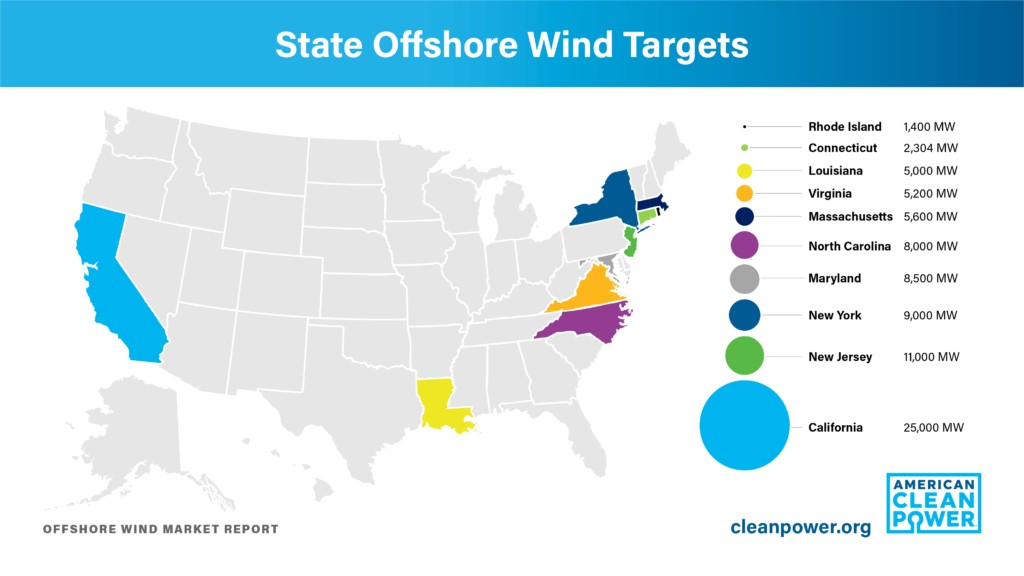
The US offshore wind industry’s rapidly growing pipeline is made up of 51,377 megawatts (MW) of expected capacity, according to a new report from the American Clean Power Association.
The projects’ expected capacity, across 32 leases, is enough electricity to power the equivalent of more than 20 million homes. Early development projects represent 33,875 MW, while advanced development projects account for 16,564 MW. There are 938 MW under construction.
Offshore wind project development, construction, and operations are expected to support up to 83,000 US jobs by 2030.
The “Offshore Wind Market Report” emphasizes the crucial role that states are playing in driving the US offshore wind pipeline. In total, 10 states have combined offshore wind targets of over 81,000 MW, as this map reflects:

The East Coast dominates with 84% of the pipeline, accounting for 43,115 MW. New York leads with 4,362 MW of capacity in the pipeline, followed by New Jersey with 3,758 MW.
Domestic shipbuilding is seeing more than 30 new vessels currently on order or under construction in order to support the growing offshore wind industry.
The US domestic supply chain for offshore wind is also set for monumental growth, with 14 facilities announced or under construction. Investment announcements for major offshore wind components exceed $1.7 billion, and with three state solicitations pending, more supply chain investments are anticipated, further growing the sector’s expansion.
However, while it’s not yet reflected in the data, developers are concerned that rising project costs due to inflation, supply chain constraints, and other economic disruptions cast doubt on the economic viability of projects.
Steel costs is one issue. By weight, offshore wind uses more steel than any other material. While steel prices have started to come down from pandemic peaks, prices in North America and Northern Europe remained 52% and 69% above January 2019 prices at the end of 2022.
John Hensley, the American Clean Power Association’s VP of research and analytics, said:
While the US offshore wind industry is making tremendous strides, it’s essential to address these challenges to ensure the long-term economic viability of these projects. A strong, collaborative approach between industry stakeholders and government bodies will help us tackle obstacles – like clarifying permitting processes – and realize the full potential of offshore wind as a key component of our clean energy future.
Read more: Siemens Gamesa debuts a wind turbine tower made of sustainable steel
Photo: Vineyard Wind transition piece
UnderstandSolar is a free service that links you to top-rated solar installers in your region for personalized solar estimates. Tesla now offers price matching, so it’s important to shop for the best quotes. Click here to learn more and get your quotes. — *ad.
Author: Michelle Lewis
Source: Electrek



